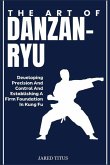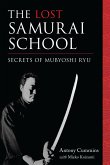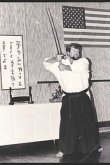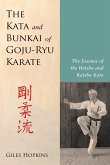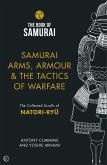Araki-Ryu is a traditional form of martial art that originated in Japan and places an emphasis on the study of a variety of weapons and techniques for fighting without weapons. This school is renowned for its complete curriculum, which incorporates methods for the sword (katana), spear (yari), staff (bo), and even grappling and striking tactics. It was established in the early period of the 17th century by the legendary samurai Araki Mataemon. In Araki-Ryu, the fundamental elements of strategy, timing, and distance are the foundation upon which the philosophy is built. Practitioners place an emphasis on the development of both physical talents and mental discipline, nurturing characteristics such as devotion, respect, and perseverance in their students. Kata, which are pre-arranged forms, are often used in training. Kata give students the opportunity to practice motions in a systematic manner, which helps them better grasp methods and how they can be applied in combat situations. In addition, Araki-Ryu places a strong emphasis on the significance of historical context. It frequently incorporates lectures about samurai culture and ethics, which transforms it from merely a physical practice into a means of preserving and honoring the Japanese martial history. Philosophy and Principles of Araki-Ryu Martial Arts: 1. Connection to Samurai Heritage: Araki-Ryu is deeply rooted in the samurai tradition, emphasizing honor, discipline, and respect. Practitioners are taught to embody the virtues of the samurai, including loyalty, humility, and integrity, which extend beyond the dojo and into daily life. 2. Mind-Body Integration: The practice of Araki-Ryu promotes the harmonious development of both mental and physical skills. Practitioners learn to cultivate awareness, focus, and presence, which are crucial for effective martial performance. This integration fosters a sense of calm and clarity, allowing students to respond effectively under pressure. 3. Adaptability and Strategy: A key principle of Araki-Ryu is adaptability in combat. Students learn to assess their surroundings, recognize the strengths and weaknesses of their opponents, and adjust their techniques accordingly. This strategic mindset encourages creative problem-solving and flexibility, essential traits for effective martial artists. 4. Kata and Practical Application: Training in Araki-Ryu involves extensive practice of kata, which are pre-arranged forms that encapsulate combat techniques. Through repetition and refinement of these forms, students develop muscle memory, timing, and precision. Kata serves as both a method of practice and a way to understand the underlying principles of combat. 5. Respect and Etiquette: Respect is a cornerstone of Araki-Ryu. Practitioners are taught to respect their instructors, fellow students, and the martial art itself. This respect is expressed through formal greetings, proper dojo etiquette, and acknowledgment of the history and lineage of the art. 6. Continuous Learning: Araki-Ryu encourages lifelong learning and personal growth. Practitioners are taught that mastery is a journey rather than a destination. This philosophy fosters humility and a desire to improve continuously, regardless of skill level. 7. Balance and Control: The principles of balance and control are essential in Araki-Ryu. Students learn to maintain their center of gravity while executing techniques, allowing them to remain stable and effective in both offensive and defensive situations. This focus on balance extends to emotional and mental control as well, promoting a well-rounded approach to martial arts training. The philosophy and principles of Araki-Ryu martial arts reflect a holistic approach to training, emphasizing not only physical skill but also character development and respect for the art's rich heritage.
Hinweis: Dieser Artikel kann nur an eine deutsche Lieferadresse ausgeliefert werden.
Hinweis: Dieser Artikel kann nur an eine deutsche Lieferadresse ausgeliefert werden.


